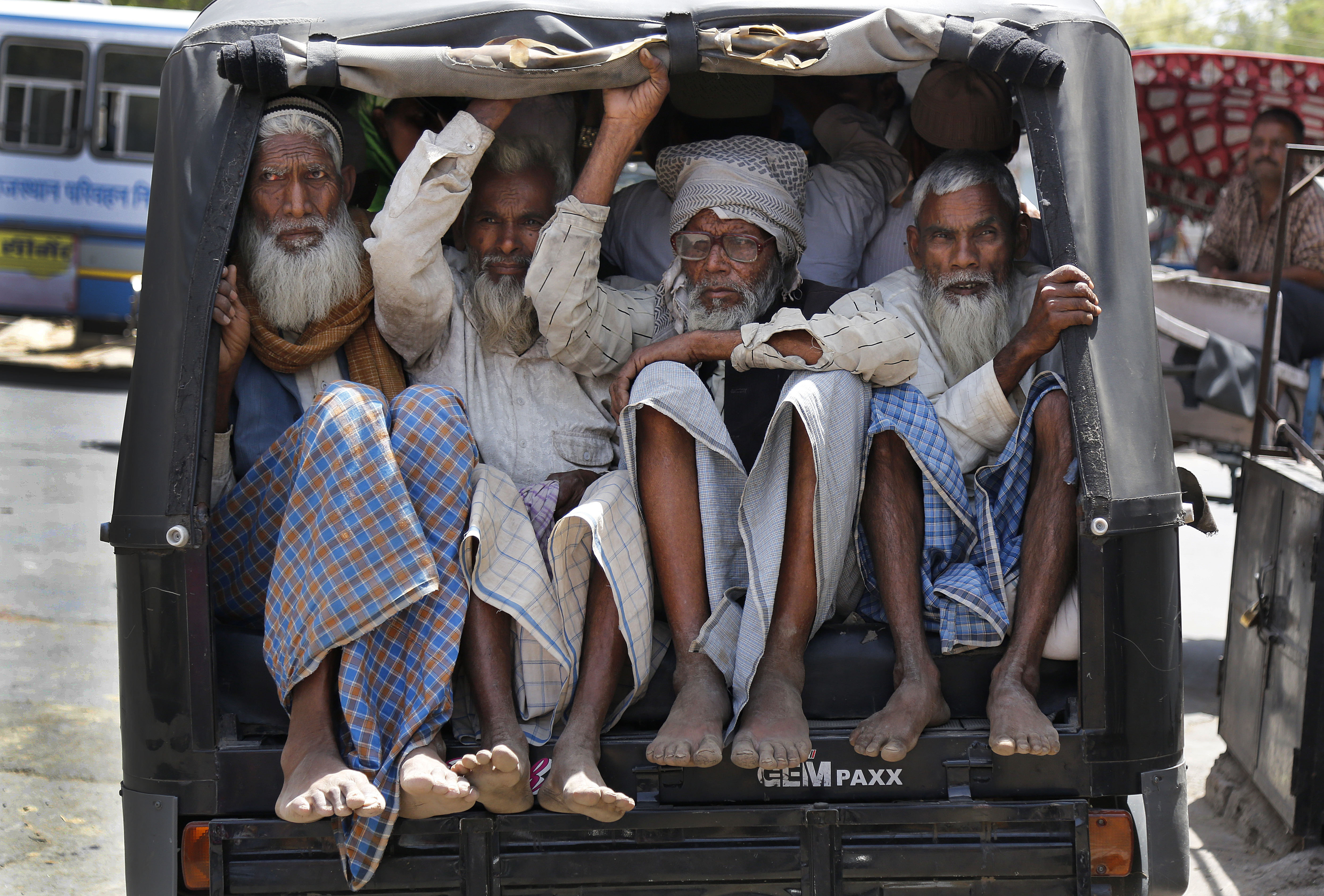NEW DELHI — They're one of the most recognizable icons of modern India.
The auto rickshaw, a sputtering motorized three-wheeler that's less than half the cost of a regular taxi, is the backbone of urban transit for millions of Indians.
![AP APTOPIX INDIA SUFI FESTIVAL I IND [image : 82339936]](http://www.gannett-cdn.com/media/2016/03/28/USATODAY/USATODAY/635947624038236110-day042315x008.jpg)
With the vehicle’s soft top, open sides and lack of seat belts, passengers rely on little more than good karma to keep them safe from crazed drivers on India’s congested roads.
Despite a top speed of only 30 mph, auto rickshaws accounted for 6,300 of the 140,000 traffic fatalities in 2014 in the country. It’s one reason the industry is in tumult.
Sensing a market poised for a revolution, a host of corporations are vying to replace the rattling workhorse of India’s transportation system with the next generation of cheap taxis to ferry 1.2 billion people around the country’s cities.
The bare-knuckle competition over the future of India’s taxicabs has bred legal conflicts.
The first mover in the race to replace the rickshaw, India’s Bajaj Auto, has been locked in a four-year battle over whether the company’s four-wheeled buggy is safer than the three-wheeler.
![AFP 507970182 I FIN IND - [image : 82341982]](http://www.gannett-cdn.com/media/2016/03/28/USATODAY/USATODAY/635947649436516945-AFP-507970182.jpg) First unveiled in 2012, Bajaj Auto’s vehicle, a quadricycle called the Qute that already is exported to 16 markets from Egypt to Mexico, offers a fully enclosed steel cab, a fuel-injected engine, seat belts for passengers and head and taillights that are much brighter than those in current rickshaws.
First unveiled in 2012, Bajaj Auto’s vehicle, a quadricycle called the Qute that already is exported to 16 markets from Egypt to Mexico, offers a fully enclosed steel cab, a fuel-injected engine, seat belts for passengers and head and taillights that are much brighter than those in current rickshaws.
"We’re the world leader in small, three-wheeler taxis — we’re making a lot of money in that segment," said S. Ravikumar, Bajaj Auto's president of business development and assurance who, like many Indians, uses only an initial rather than a first name. "We wanted to upgrade (those taxis) and create a much better product that will serve the same purpose."
Bajaj Auto’s competitors, including automaker Tata Motors, voiced safety concerns about the quadricycle. The government drafted new regulations for four-wheelers that delayed approval of the new category of lightweight vehicles until February 2014.
Auto rickshaw drivers’ associations and others then filed a unique Indian form of class action called "public interest litigation" that challenged that approval, keeping the Qute off the roads again.
“No crash test has been attempted here in India,” said former Indian solicitor general Gopal Subramanium, who is representing the plaintiffs. “The information we have from Europe with regard to a crash test is abysmal. This is the reason why quadricycles are not used as a vehicle for transport in any European countries.”
Unlike class action lawsuits in the United States, any concerned citizen can file public interest litigation in India. In theory, courts are supposed to dismiss suits filed solely for financial or political gain. But dismissing the litigation can take years in the Indian legal system, so competing companies often stymie their rivals using the legal maneuver.
"Business exigencies are definitely sometimes at the root of (public interest litigations)," said Delhi-based attorney Navin Syiem of IndusLaw, a major firm in India.
As Bajaj Auto's court case dragged on, Tata unveiled its own low-cost rickshaw replacement, the four-wheeled Magic Iris, which it began pitching to state governments last year. Tata also reportedly has its own quadricycle, the Bravo, under development.
Other makers of electric three-wheelers have gathered steam in the Indian auto-rickshaw market.
Japan’s Terra Motors recently announced that it will have 30,000 electric rickshaws on India’s streets by the end of the year, and that many companies from China already are selling electric rickshaws in India without regulatory approvals, Chief Executive Toru Tokushige said in a news release.
The Indian automobile and farm equipment conglomerate Mahindra & Mahindra was reported to have a quadricycle in the works in 2014, aiming to hit the market next year. And U.S.-based all-terrain vehicle maker Polaris Industries, which entered the Indian market in 2011, has said it is considering the launch of a quadricycle here.
Italy’s Piaggio, which sells quadricycles in Europe and is the biggest player in India’s three-wheeler segment after Bajaj, also has said it is looking at the Indian market.
"We appreciate that some of our competitors are getting their products ready," said Ravikumar, lamenting the inefficiencies of the Indian courts. "Our hands are tied. This is the legal system."
Richshaw driver Jeevan Mishra, 50, is concerned about competitors because he could stand to lose his current investment.
Mishra said drivers such as he have taken out loans and sunk their life savings into their three-wheelers and licenses, which run about four times the cost of the vehicle itself.
Mishra wondered what would happen if his three-wheeler became obsolete?
“Already, we’re getting fewer and fewer customers because there are too many rickshaws,” Mishra said.
American tourist Joyce Kim, 37, said she would be sad if auto rickshaws disappeared from India’s streets, but she understood why perhaps they should go.
"Riding an auto rickshaw is like jumping on an older carnival ride — terrifying for some, but fun for me," she said. "But rickshaws are not why tourists come to Delhi, nor are they the city's only charm."
![India Overview [oembed : 82378410] [oembed : 82378410] [oembed : 82378410] [oembed : 82378410] [oembed : 82378410] [oembed : 82378410] [oembed : 82378410] [oembed : 82378410] [oembed : 82378410] [oembed : 82378410] [oembed : 82378410] [oembed : 82378410] [oembed : 82378410] [oembed : 82378410] [oembed : 82378410] [oembed : 82378410] [oembed : 82378410]](/Portals/_default/Skins/PrestoLegacy/CommonCss/images/smartembed.png)


